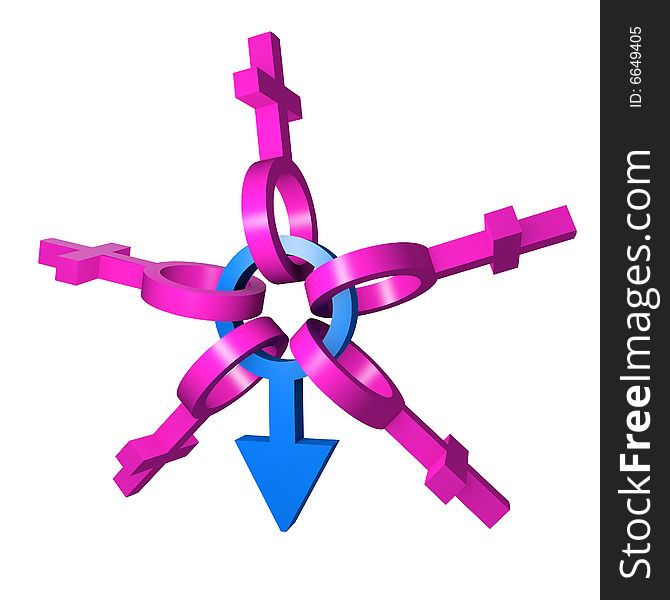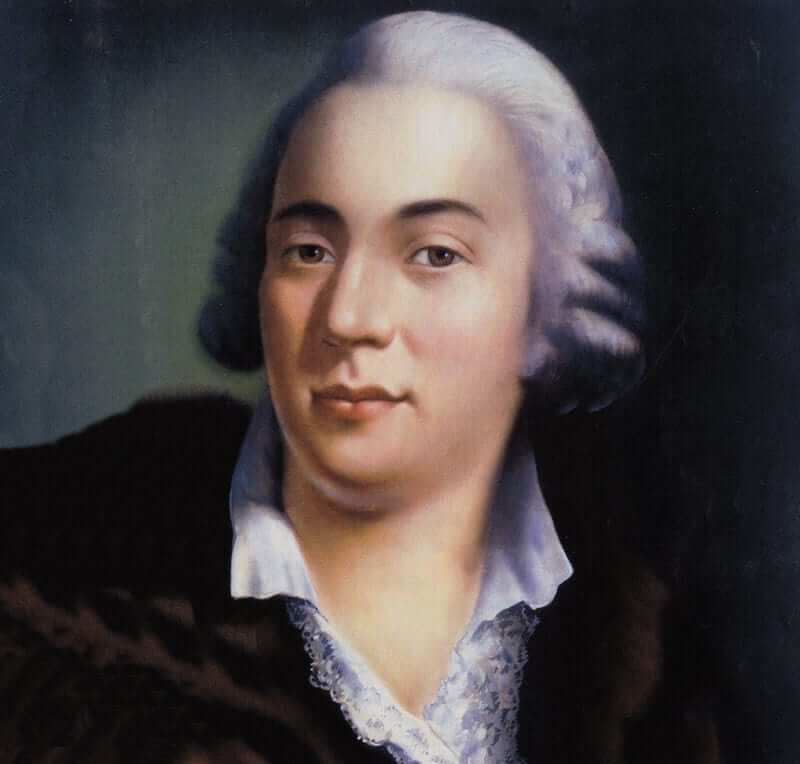Casanova Symbol
Kokopelli is a fertility deity, usually depicted as a humpbackedflute player (often with feathers or antenna-like protrusions on his head), who is venerated by some Native American cultures in the Southwestern United States. Like most fertility deities, Kokopelli presides over both childbirth and agriculture. He is also a trickster god and represents the spirit of music.
But as a symbol of the conflict between Germany and the papacy, Canossa became enormously important. For many Lutherans, the emperor was the ‘first Protestant’. And when, in the 19th century, Otto von Bismarck launched his drive to curtail the powers of the Catholic church, he made his intentions very clear. Find the latest Cassava Sciences, Inc. (SAVA) stock quote, history, news and other vital information to help you with your stock trading and investing. The symbol appeared to have wings on the side that ran from the atop his torso before ending around his back, over which was a similar red and white design absent of the white diamond. Large white patches lined with red-covered each side of his hips before ending at his lower thighs, and he wore a gold belt that had a silver buckle with red eyes. Either way, Dishy Rishi's gone from barely known to bona-fide sex symbol over the past 12 months. Piers - revenge is sweet for our newly-crowned Casanova. Casa Systems, Inc. Common Stock (CASA) After-Hours Stock Quotes - Nasdaq offers after-hours quotes and extended trading activity data for US and global markets.
Myths[edit]

Among the Hopi, Kokopelli carries unborn children on his back and distributes them to women; for this reason, young girls often fear him. He often takes part in rituals relating to marriage, and Kokopelli himself is sometimes depicted with a consort, a woman called Kokopelmimi by the Hopi.[1] It is said that Kokopelli can be seen on the full and waning moon, much like the 'man' or the 'rabbit' on the moon.'[2]
Kokopelli also presides over the reproduction of game animals, and for this reason, he is often depicted with animal companions such as rams and deer. Other common creatures associated with him include sun-bathing animals such as snakes, or water-loving animals like lizards and insects.
In his domain over agriculture, Kokopelli's flute-playing chases away the winter and brings about spring. Many tribes, such as the Zuni, also associate Kokopelli with the rains.[3] He frequently appears with Paiyatamu, another flutist, in depictions of maize-grinding ceremonies. Some tribes say he carries seeds and babies on his back.[3][4]
In recent years, the emasculated (i.e. non-ithyphallic) version of Kokopelli has been adopted as a broader symbol of the Southwestern United States as a whole. His image adorns countless items such as T-shirts, ball caps, key-chains, and patio decor.[5] A bicycle trail between Grand Junction, Colorado, and Moab, Utah, is now known as the Kokopelli Trail.
Origins and development[edit]
Kokopelli has been revered since at least the time of the Hohokam, Yuman, and Ancestral Puebloan peoples. The first known images of him appear on Hohokampottery dated to sometime between 750 and 850 AD.
Kokopelli may have originally been a representation of Aztec traders, known as pochtecas, who may have traveled to this region from northern Mesoamerica. These traders brought their goods in sacks slung across their backs and this sack may have evolved into Kokopelli's familiar hump; some tribes consider Kokopelli to have been a trader. These men may also have used flutes to announce themselves as friendly as they approached a settlement. This origin is still in doubt, however, since the first known images of Kokopelli predate the major era of Mesoamerican-Ancestral Pueblo peoples trade by several hundred years, as well as the Aztec Empire and its pochtecas.[6]
Many believe that Kokopelli was more than a trader, and more significantly, an important conveyor of information and trinkets from afar. As a storyteller par excellence, Kokopelli had the gift of languages, with a formidable repertoire of body-language storytelling skills to complement his many talents. Kokopelli's usual noisy announcement upon arrival secured both the identity, and therefore the safety, of his unique presence into a community. Often accompanied by an apprentice in his travels and trade, Kokopelli was important in linking distant and diverse communities together. In the South American Andes, the 'Ekeko' character functioned in much the same way. Upon arrival, his banging and clanging of his wares dangling all about his person signaled to all that a night of entertainment and trade of his goods and talismans was at hand.
Even today, occasional outside visitors may be called or referred to as 'Kokopelli' when they bring news, stories, and trinkets from the outside world to share with the little pueblos or villages.[citation needed]
Another theory is that Kokopelli is actually an anthropomorphic insect. Many of the earliest depictions of Kokopelli make him very insect-like in appearance. The name 'Kokopelli' may be a combination of 'Koko', another Hopi and Zuni deity, and 'pelli',[3] the Hopi and Zuni word for the desert robber fly, an insect with a prominent proboscis and a rounded back, which is also noted for its zealous sexual proclivities. A more recent etymology is that Kokopelli means literally 'kachina hump'. Because the Hopi were the tribe from whom the Spanish explorers first learned of the god, their name is the one most commonly used.
Kokopelli is one of the most easily recognized figures found in the petroglyphs and pictographs of the Southwest.[4] The earliest known petroglyph of the figure dates to about 1000 AD.[4] The Spanish missionaries in the area convinced the Hopi craftsmen to usually omit the phallus from their representations of the figure. As with most kachinas, the Hopi Kokopelli was often represented by a human dancer. Kokopelli is a cottonwood sculpture often carved today.
A similar humpbacked figure is found in artifacts of the Mississippian culture of the United States southeast.[7] Between approximately 1200 to 1400 AD, water vessels were crafted in the shape of a humpbacked woman. These forms may represent a cultural heroine or founding ancestor, and may also reflect concepts related to the life-giving blessings of water and fertility.
Loverboy Symbol
Other names[edit]
- Kokopele
- Kokopilli
- Kokopilau
- Neopkwai'i (Pueblo)
- Ololowishkya (Zuni)
- La Kokopel
See also[edit]
References[edit]
- Notes
- ^Young, John V. (1990). Kokopelli: Casanova of the Cliff Dwellers; The hunchbacked flute player. Filter Press. p. 18. ISBN978-0-86541-026-8.
- ^Peter Pegnam (December 1, 1992). 'Ancient Anasazi Indian Mystery Solved?'. Tucson Citizen Newspaper, Tucson. Arizona.
- ^ abc'Kokopelli Legends & Lore'. KokOasis. Archived from the original on 2003-09-09. Retrieved 2008-05-31.
- ^ abc'Kokopelli Legends & Lore'. Glenn Welker. Retrieved 2008-05-31.
- ^Leo W. Banks. Tucson Weekly 1999. 'Cuckoo for Kokopelli'.
- ^Mischa Titiev (1939). 'The Story of Kokopele'. American Anthropologist. 41 (1): 91–98. doi:10.1525/aa.1939.41.1.02a00070.
- ^'MISSISSIPPIAN CULTURES FROM ELSEWHERE'. National Park Service (US Interior Dept.). Archived from the original on February 11, 2007. Retrieved 2008-05-31.

- Bibliography
- Slifer, Dennis, and Duffield, James (1994). Kokopelli: Flute Player Images in Rock Art. Santa Fe, New Mexico: Ancient City Press.
- Young, John V. (1990). Kokopelli: Casanova of the Cliff Dwellers: The Hunchbacked Flute Player. Palmer Lake, Colorado: Filter Press. ISBN0-86541-026-7.
- Schuler, Linda Lay. She, who remembers.
Further reading[edit]
- Malotki, Ekkehart. Kokopelli: The Making of an Icon. (Univ. of Nebraska Pr., 2000). ISBN0-8032-3213-6 (hardcover), ISBN0-8032-8295-8 (paper).
- Martineau, LaVan, The Rocks Begin to Speak, KC Publications, Las Vegas, Nevada, 2003
- McLeod, David My Hand Tatoo, American Educator, (Jan-Feb, 1992): Right Hand
- Michael Castro, The Kokopilau Cycle' Homage to the Hopi, poetry, The Blue Cloud Quarterly, Marvin, South Dakota, 1975
- Patteson, Alex, A Field Guide to Rock Art Symbols of the Greater Southwest, Johnson Books, Boulder, Colorado, 1992
- Schaafsma, Polly, Rock Art in New Mexico, Museum of New Mexico Press, Santa Fe, New Mexico, 1992
- Slifer, Dennis, Kokopelli: The Magic, Mirth, and Mischief of an Ancient Symbol, Gibbs M. Smith Inc, 2007. ISBN1423601742.
- Slifer, Dennis, The Serpent and the Sacred Fire; Fertility Images in Southwest Rock Art, Museum of New Mexico Press, Santa Fe, New Mexico, 2000
- Slifer, Dennis, Signs of Life: Rock art in the Upper Rio Grande, Ancient City Press, Santa Fe, New Mexico, 1998
- Wellmann, Klaus F. (1970). 'Kokopelli of Indian Paleology'. JAMA. 212 (10): 1678–82. doi:10.1001/jama.1970.03170230080009. PMID4911855.
External links[edit]

- Media related to Kokopelli at Wikimedia Commons
Family Crest Image (JPG) Heritage Series - 600 DPI
$14.50$8.70
Set of 4 Coffee Mugs and Keychains
$69.95$55.95
Early Origins of the Casanova family
The surname Casanova was first found in the culturally rich region of Lombardy, where earliest records date back to the year 1126 in Milan, when Apollonio Casati was Imperial Vicar for Lotario il Sassone.

Early History of the Casanova family
This web page shows only a small excerpt of our Casanova research. More information is included under the topic Early Casanova History in all our PDF Extended History products and printed products wherever possible.
Casanova Symbol
Casanova Spelling Variations
Surnames that originated in Italy are characterized by an enormous number of spelling variations. Some of these are derived from regional traditions and dialects. Northern names, for instance, often end in 'o', while southern names tend to end in 'i'. Other variations come from the fact the medieval scribes tended to spell according to the sound of words, rather than any particular set of rules. The recorded variations of Casanova include Casa, Case, Dalla Casa, Dallacasa, Della Casa, Da Ca, Dacca, Da Cha, Dacha, Dalla Ca, Dallaca, Dalla Cha, Dallacha, Casella, Casello, Caselli, Casèl, Casiello, Casillo, Casetta, Casati, Casselli, Casetti, Casèt, Casina, Casine, Casino, Casini, Casola, Casolla, Casol, Casotti, Casone, Casoni, Cason, Casacchia, Casaccia, Casacci, Casassa, Casazza, Casabianca, Casablanca, Cabianca, Casabassa, Cabassa, Casabella, Cabella, Casabona, Cabona, Caboni, Casagrande, Casagrandi, Casamassima, Casanova, Canova, Casavecchia and many more.
Early Notables of the Casanova family (pre 1700)
Prominent among bearers of this family in early times was members of the Casati family of Milan during the late 13th century, who owned many castles and vast amounts of land. Other bearers of the name include Conte Casati, who was a Cardinal, and Giovannino Casati, who was mayor of Piacenza in 1350. Jaime de Casanova (c.1435-1504), a Spanish Roman Catholic cardinal; Pietro Casola (1427-1507), a Catholic Canon, born to a noble Italian family in Milan; Giovanni della Casa (1503-1556) was an author and prelate born near Florence appointed arch-bishop of Benevento. Cherubino Casati was a priest in Milan around 1550...
Another 128 words (9 lines of text) are included under the topic Early Casanova Notables in all our PDF Extended History products and printed products wherever possible.
What Does Casanova Mean
Casanova migration +
Some of the first settlers of this family name were:Casanova Settlers in United States in the 19th Century

- Franco Miguel Casanova, aged 39, who landed in New Orleans, La in 1825 Passenger and immigration lists index : a guide to published arrival records of about 500,000 passengers who came to the United States and Canada in the seventeenth, eighteenth, and nineteenth centuries. 1982-1985 Cumulated Supplements in Four Volumes Detroit, Mich. : Gale Research Co., 1985, Print (ISBN 0-8103-1795-8)'>[1]
- Lucy Casanova, aged 28, who arrived in New Orleans, La in 1829 Passenger and immigration lists index : a guide to published arrival records of about 500,000 passengers who came to the United States and Canada in the seventeenth, eighteenth, and nineteenth centuries. 1982-1985 Cumulated Supplements in Four Volumes Detroit, Mich. : Gale Research Co., 1985, Print (ISBN 0-8103-1795-8)'>[1]
- Maria Getrudes Casanova, who landed in Texas in 1835 Passenger and immigration lists index : a guide to published arrival records of about 500,000 passengers who came to the United States and Canada in the seventeenth, eighteenth, and nineteenth centuries. 1982-1985 Cumulated Supplements in Four Volumes Detroit, Mich. : Gale Research Co., 1985, Print (ISBN 0-8103-1795-8)'>[1]
- Juan Baptiste Casanova, who landed in Texas in 1835 Passenger and immigration lists index : a guide to published arrival records of about 500,000 passengers who came to the United States and Canada in the seventeenth, eighteenth, and nineteenth centuries. 1982-1985 Cumulated Supplements in Four Volumes Detroit, Mich. : Gale Research Co., 1985, Print (ISBN 0-8103-1795-8)'>[1]
- Miguel Casanova, who arrived in Puerto Rico in 1838 Passenger and immigration lists index : a guide to published arrival records of about 500,000 passengers who came to the United States and Canada in the seventeenth, eighteenth, and nineteenth centuries. 1982-1985 Cumulated Supplements in Four Volumes Detroit, Mich. : Gale Research Co., 1985, Print (ISBN 0-8103-1795-8)'>[1]
- ... (More are available in all our PDF Extended History products and printed products wherever possible.)
Contemporary Notables of the name Casanova (post 1700) +
- Francesco Giuseppe Casanova (1727-1803), Italian painter
- Giacomo Girolamo Casanova (1725-1798), Italian adventurer and author
- Francis Casanova (1727-1805), English battle painter, descended from an ancient Spanish family, for some generations conspicuous in the annals of gallantry and intrigue [2]
- Paulino Ortiz Casanova (1941-2017), Cuban Major League Baseball catcher who played from 1965 to 1974
- Achille Casanova (1941-2016), Swiss journalist and politician, Vice-Chancellor of Switzerland (1981-2005)
- Jean Toussaint Arrighi de Casanova, Duke of Padoue, French Divisional General during the French Revolutionary and Napoleonic Wars from 1789 to 1815 Jean Casanova. Retrieved from http://www.napoleon-series.org/research/c_frenchgenerals.html'>[3]
- Vince Casanova (1953-2013), American newspaper executive, president and COO of Tribune Media Services
- Rodolfo Casanova (1915-1980), Mexican boxer
- Fernando Casanova (b. 1988), Dominican international footballer
- Myriam Casanova (b. 1985), professional female tennis player from Switzerland
- ... (Another 5 notables are available in all our PDF Extended History products and printed products wherever possible.)
Related Stories +
Citations +
- ^ Filby, P. William, Meyer, Mary K., Passenger and immigration lists index : a guide to published arrival records of about 500,000 passengers who came to the United States and Canada in the seventeenth, eighteenth, and nineteenth centuries. 1982-1985 Cumulated Supplements in Four Volumes Detroit, Mich. : Gale Research Co., 1985, Print (ISBN 0-8103-1795-8)
- ^ Wikisource contributors. 'Dictionary of National Biography, 1885-1900.' Wikisource . Wikisource , 4 Jun. 2018. Web. 25 Nov. 2019
- ^ Generals Who Served in the French Army during the Period 1789-1815. (Retrieved 2015, February 11) Jean Casanova. Retrieved from http://www.napoleon-series.org/research/c_frenchgenerals.html